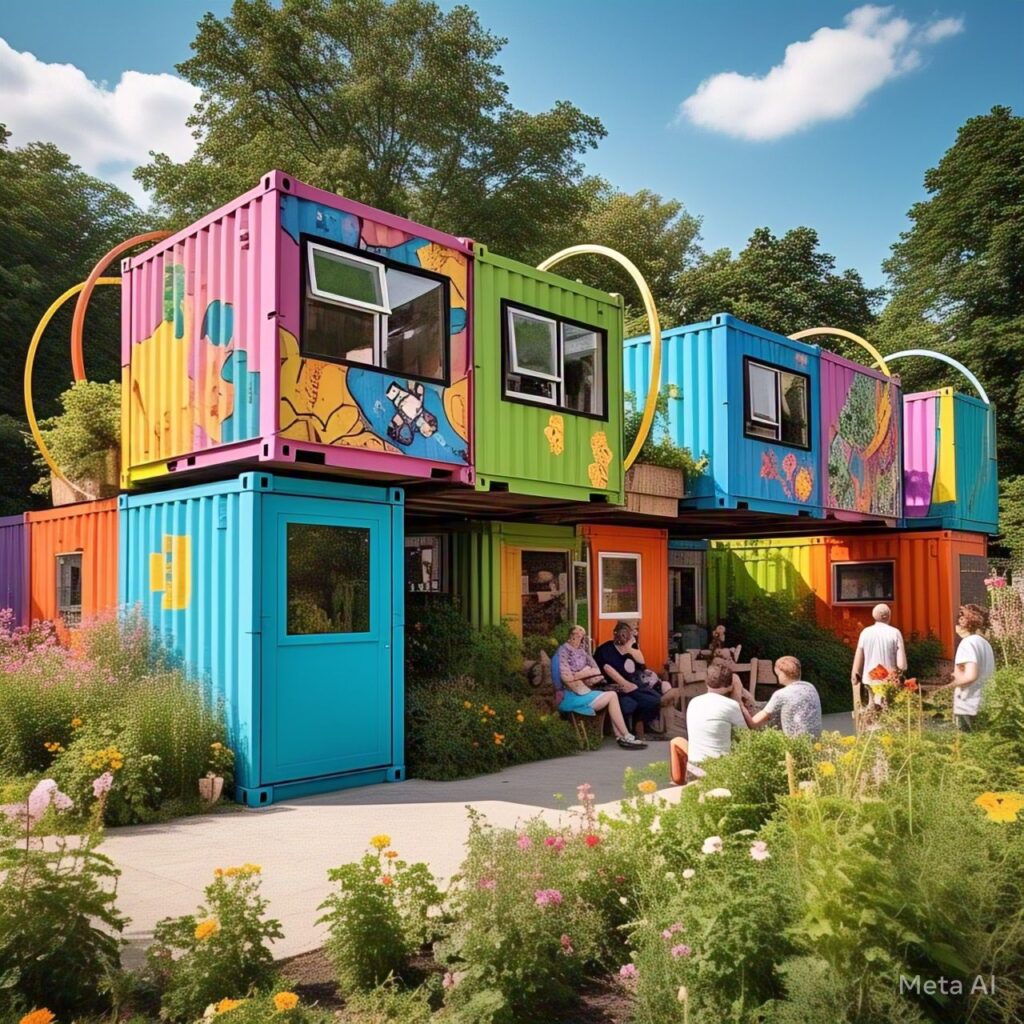A container hoop building is a cost-effective, durable, and versatile structure that combines shipping containers with a hoop-style fabric roof. These structures are widely used in agriculture, storage, workshops, and vehicle protection. Their affordability and ease of setup make them an excellent alternative to traditional buildings.
In this comprehensive guide, we will explore everything you need to know about container hoop buildings, including their benefits, common uses, construction considerations, and tips for choosing the right one.
1. What Is a Container Hoop Building?
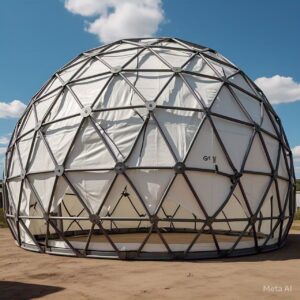
A container hoop building consists of two primary components:
- Shipping Containers – Typically, 20ft or 40ft containers serve as the foundation and provide secure storage on the sides.
- Hoop Roof Structure – A curved steel or aluminum frame covered with durable fabric, such as polyethylene or PVC, creating a spacious shelter.
These buildings are popular for their affordability, durability, and ease of installation. They provide covered storage while allowing for natural airflow, making them ideal for various applications.
2. Benefits of Using a Container Hoop Building
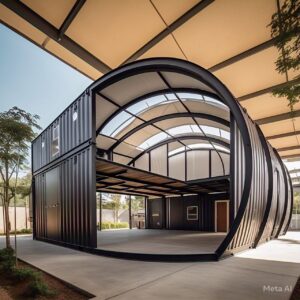
2.1 Cost-Effective Solution
One of the biggest advantages of a container hoop building is its affordability. Unlike traditional metal or wooden buildings, which require extensive materials and labor, these structures use readily available shipping containers and a simple hoop framework. This reduces costs significantly.
2.2 Fast and Easy Installation
A container hoop building can be set up in a matter of days, whereas traditional construction might take weeks or months. The assembly process is straightforward, making it a great option for those who need a quick and reliable shelter.
2.3 Durability and Weather Resistance
These buildings are designed to withstand harsh weather conditions. The steel-framed hoop roof is strong enough to handle wind, snow, and rain, while the shipping containers provide stability and security. The fabric covering is UV-resistant, waterproof, and tear-resistant, ensuring longevity.
2.4 Portable and Expandable
Unlike permanent buildings, container hoop buildings are easy to relocate. You can disassemble the hoop roof and move the shipping containers if necessary. Additionally, these buildings can be expanded by adding more containers or increasing the roof size.
2.5 Multi-Purpose Use
From agricultural storage to vehicle protection, these structures offer endless possibilities. They provide covered space while also allowing for secure, lockable storage within the containers.
3. Common Uses of Container Hoop Buildings
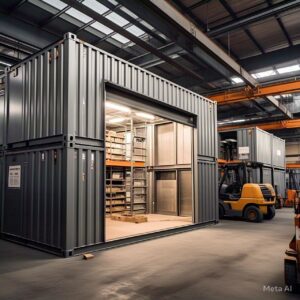
3.1 Agricultural Storage and Livestock Shelter
Farmers often use container hoop buildings to store hay, feed, and farming equipment. The open space allows for easy access while protecting supplies from rain and sun. These buildings also make excellent shelters for livestock, providing shade and protection.
3.2 Industrial and Commercial Storage
Businesses use these structures to store tools, machinery, and bulk materials. The shipping containers offer secure storage, while the hoop structure provides a weather-resistant workspace.
3.3 Workshops and Garages
A container hoop building can be an ideal workshop or garage. The spacious covered area allows for vehicle repairs, woodworking, and other activities while keeping tools and equipment secure inside the containers.
3.4 Vehicle and Equipment Protection
Truck owners, construction companies, and auto repair businesses use these buildings to protect vehicles and equipment from the elements. The large open space accommodates trucks, boats, tractors, and heavy machinery.
3.5 Temporary Housing and Disaster Relief
In emergency situations, container hoop buildings can serve as temporary housing or relief centers. Their quick setup and durability make them suitable for disaster response efforts.
4. Key Considerations Before Setting Up a Container Hoop Building
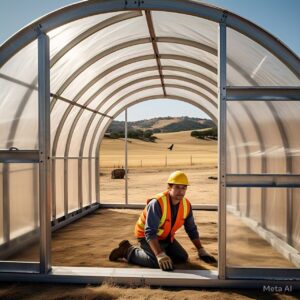
4.1 Choosing the Right Size
Before purchasing a container hoop building, determine the dimensions you need. Widths can range from 20ft to 60ft or more, depending on the space required. The height should be sufficient to accommodate vehicles or equipment.
4.2 Selecting High-Quality Materials
- Shipping Containers: Choose containers that are structurally sound and rust-free.
- Hoop Frame: Look for galvanized steel or aluminum frames that resist corrosion.
- Fabric Cover: Ensure the cover is UV-resistant, waterproof, and tear-proof.
4.3 Ensuring Proper Anchoring and Stability
Proper anchoring is crucial to withstand strong winds and heavy snow loads. Containers should be securely positioned, and additional anchoring may be required for the hoop structure.
4.4 Understanding Local Building Codes and Permits
Some areas may require permits for container hoop buildings. Check with local authorities to ensure compliance with zoning laws and construction regulations.
5. Steps to Build a Container Hoop Building
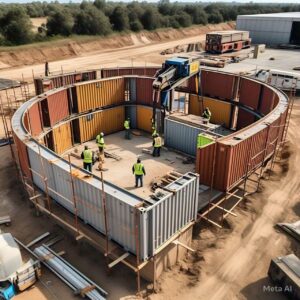
5.1 Site Preparation
- Clear and level the ground where the containers will be placed.
- Ensure proper drainage to prevent water accumulation.
5.2 Positioning the Shipping Containers
- Place the containers parallel to each other at the desired distance.
- Secure them on a solid foundation to prevent shifting.
5.3 Installing the Hoop Frame
- Attach the hoop frame to the containers using brackets or welded supports.
- Ensure the structure is evenly aligned and securely fastened.
5.4 Attaching the Fabric Cover
- Stretch the cover over the hoop frame and secure it tightly.
- Use tensioning systems to keep the cover in place.
5.5 Inspecting and Maintaining the Structure
- Regularly check for wear and tear on the fabric.
- Ensure bolts and connections remain tight over time.
- Clean the cover periodically to maintain durability.
6. How to Choose the Best Container Hoop Building Supplier
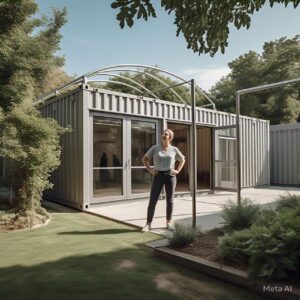
6.1 Research Reputable Manufacturers
Look for companies specializing in container hoop buildings with positive customer reviews and proven track records.
6.2 Compare Prices and Features
Evaluate different models based on size, material quality, and included accessories. Some suppliers offer additional features like roll-up doors, ventilation, and insulation.
6.3 Check Warranty and Customer Support
A good supplier should provide a warranty on both the frame and fabric. Reliable customer support is essential for installation guidance and troubleshooting.
7. Frequently Asked Questions (FAQs)
7.1 How long does a container hoop building last?
With proper maintenance, a container hoop building can last 15-25 years. The shipping containers have a lifespan of 25+ years, while high-quality fabric covers can last 10-15 years.
7.2 Can a container hoop building withstand snow and wind?
Yes, if properly anchored and built with quality materials, these buildings can withstand heavy snow and strong winds. Some manufacturers offer reinforced designs for extreme weather conditions.
7.3 Is a permit required to install a container hoop building?
Permit requirements vary by location. Check with your local authorities to determine if a permit is needed.
7.4 Can I move a container hoop building to a different location?
Yes! One of the advantages of a container hoop building is its portability. You can disassemble the hoop structure and move the containers to a new site.
7.5 What is the best fabric for a hoop building cover?
Heavy-duty polyethylene or PVC fabric with UV resistance and waterproof properties is ideal for longevity and durability.
Conclusion
A container hoop building is a practical and affordable solution for storage, workshops, agriculture, and vehicle protection. Its quick installation, durability, and versatility make it a popular choice for individuals and businesses alike.
By considering factors like size, material quality, anchoring, and local regulations, you can choose the best container hoop building for your needs. Whether you’re looking for a farm shelter, a garage, or a commercial storage solution, this type of building offers unmatched convenience and functionality.
If you’re ready to invest in a container hoop building, start by researching reputable suppliers and selecting a structure that meets your specific requirements.

